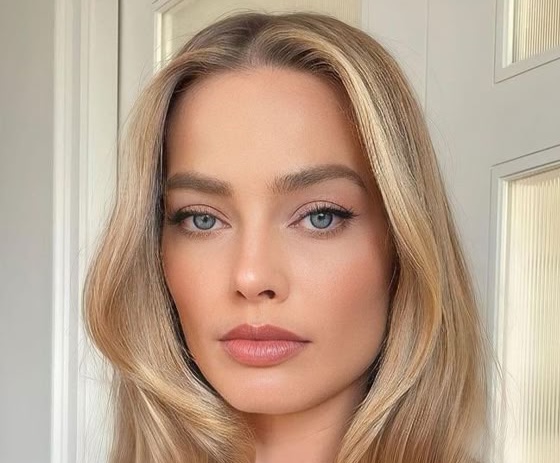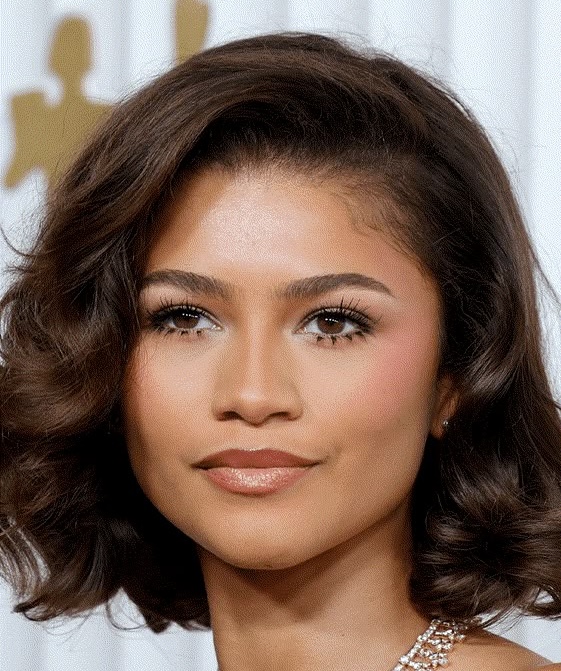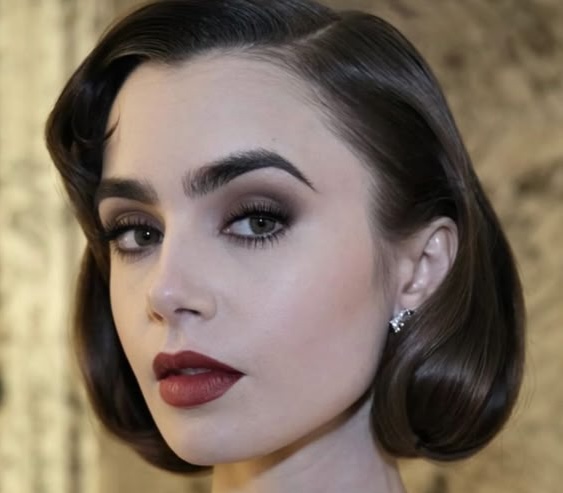
Are You Low, Medium, or High Contrast? Your Contrast and Color Season
When it comes to makeup, understanding your contrast level is key to enhancing your natural beauty. Contrast in makeup refers to the level of difference between your skin tone, hair color, and eye color. This can be classified as low, medium, or high contrast, and plays a crucial role in determining the shades that complement you best. Pairing this understanding with your color season (Spring, Summer, Autumn, Winter) can help you achieve stunning, balanced looks.
Table of Contents
- What Is Contrast in Makeup?
- How Contrast Relates to Color Seasons
- Low Contrast: Soft and Light Seasons
- Medium Contrast: Cool and Warm Seasons
- High Contrast: Bright and Deep Seasons
What Is Contrast in Makeup?
-
Low Contrast: Minimal differences between your skin, hair, and eye colors. For example, someone with light skin, blonde hair, and light blue eyes would be considered low contrast. The transitions between features are subtle.
-
Medium Contrast: A moderate difference between skin, hair, and eye colors. This can be seen in individuals with slightly darker hair or eyes compared to their skin tone, but the contrast is not stark.
-
High Contrast: A dramatic difference between your skin, hair, and eye colors. Think of someone with fair skin and dark hair, or deep skin with bright eyes. High contrast features stand out distinctly from one another.
How Contrast Relates to Color Seasons
The seasonal color analysis system (Spring, Summer, Autumn, Winter) classifies individuals based on their skin undertone (cool or warm), and whether they look best in soft or bright, light or dark colors. Contrast level is another key factor in finding your best colors. Let's break it down by contrast levels and color seasons.
Low Contrast: Soft and Light Seasons

Low contrast individuals typically fall into the Soft Autumn, Soft Summer, Light Spring, or Light Summer categories. The balance between features is subtle, so makeup choices should follow suit to create harmony. The goal for low contrast is to avoid overly bold looks, which can overwhelm delicate features.
-
Soft Autumn (Warm, Muted Tones):
- Makeup Colors: Warm, muted colors like peach, soft brown, dusty rose, and olive. Earthy tones blend seamlessly with this season's natural features.
- Contrast Tips: Stick to soft, blended looks. A monochromatic color scheme for eyes, lips, and cheeks works beautifully without overpowering your features.
-
Soft Summer (Cool, Muted Tones):
- Makeup Colors: Cool, muted tones like mauve, soft plum, taupe, and lavender. These shades flatter the cool undertones while maintaining subtlety.
- Contrast Tips: Keep your makeup light and blended. Soft pink or lavender blush with a subtle lip color creates a cohesive look that works with your natural low contrast.
-
Light Spring (Warm, Light Tones):
- Makeup Colors: Peach, coral, light gold, and warm pinks. These bright, warm tones reflect the light, playful nature of this season.
- Contrast Tips: Go for warm, luminous makeup that brightens your complexion. You can experiment with slightly brighter shades, like soft corals or light gold eyeshadows, without being too bold.
-
Light Summer (Cool, Light Tones):
- Makeup Colors: Pastels and cool tones like soft pinks, light lavender, and cool beige. Light Summer thrives in delicate, airy shades.
- Contrast Tips: Use cool, soft makeup colors, with an emphasis on pastel shades that create a serene and balanced look. A light pink blush paired with a soft lip color highlights your low contrast.
Medium Contrast: Cool and Warm Seasons

Medium contrast individuals often belong to the Warm Spring, Warm Autumn, Cool Summer, or Cool Winter seasons. Their features display a moderate difference in coloring, and they can pull off slightly more varied makeup looks without overwhelming their features.
-
Warm Spring (Warm, Bright Tones):
- Makeup Colors: Fresh, warm shades like peach, coral, warm pinks, and light gold. This season thrives with soft, lively colors that have warmth and energy.
- Contrast Tips: Go for bright, warm tones that reflect the vitality of spring. Use warm blushes and light bronzers to add a natural glow. Keep the look light and radiant, focusing on warmth and freshness without going too dark.
-
Warm Autumn (Warm, Rich Tones):
- Makeup Colors: Rich browns, deep corals, and golden shades. Think of earthy, autumnal colors that enhance warm undertones.
- Contrast Tips: Opt for rich, warm makeup, but avoid colors that are too dark or bold. Burnt oranges or soft browns for lips and eyeshadow add depth without being overpowering.
-
Cool Summer (Cool, Medium Contrast Tones):
- Makeup Colors: Cool, medium shades like blue-based pinks, plum, and gray. This season is all about striking a balance between coolness and saturation.
- Contrast Tips: Focus on cool tones that have just enough saturation to enhance your features, without being too dark. Subtle contouring or soft eyeshadow colors can add depth without looking harsh.
-
Cool Winter (Cool, Higher Contrast Tones):
- Makeup Colors: Bold and cool shades like blue-based reds, deep purples, icy pinks, and black. Think striking and vibrant with a cool undertone.
- Contrast Tips: Embrace medium to high contrast. Opt for slightly bolder lip colors or sharply defined eyes with charcoal or black eyeliner and mascara. Cool winters look stunning in more dramatic looks, so don't be afraid to use slightly darker colors to make your features pop.
High Contrast: Bright and Deep Seasons

High contrast individuals often belong to the Bright Spring, Bright Winter, Deep Autumn, or Deep Winter categories. Their features have bold, striking differences that allow for more intense makeup colors without overpowering their natural beauty.
-
Bright Spring (Warm, Bright Tones):
- Makeup Colors: Bold coral, turquoise, vibrant pink, and peach. Bright Spring is full of energy and life, reflected in vibrant colors that add warmth.
- Contrast Tips: Embrace bold, warm shades for lips and eyes. Vibrant coral lipstick or bright pink blush enhances your high contrast features without overpowering them.
-
Bright Winter (Cool, Bright Tones):
- Makeup Colors: Electric pink, bold plum, icy blue, and clear red. Bright Winter thrives on vivid, clear shades with high saturation.
- Contrast Tips: Go bold with your makeup! Crisp reds or bold blues on the eyes or lips will enhance your high contrast without being overwhelming.
-
Deep Autumn (Warm, Deep Tones):
- Makeup Colors: Rich browns, deep reds, and olive green. Deep Autumn features deep, earthy tones that create a grounded, rich look.
- Contrast Tips: Dark lipstick and bold eyeshadow in earthy tones suit this season’s high contrast. Don’t shy away from deep, rich makeup looks.
-
Deep Winter (Cool, Deep Tones):
- Makeup Colors: Deep blues, wine, black, and silver. Deep Winter’s cool undertones thrive with intense, saturated shades.
- Contrast Tips: Bold and dramatic makeup suits Deep Winter perfectly. Deep red or berry lipstick paired with bold eyeliner enhances the natural contrast.
Whether you have low, medium, or high contrast features, understanding how contrast interacts with your color season can guide you toward the most flattering makeup choices. By aligning your makeup with your natural coloring and contrast level, you can create looks that enhance and harmonize with your features. Make the most of your color season by embracing your unique beauty and finding the makeup shades that bring out the best in you.
Related Reading
- The Complete Guide to Finding Your Season
- Deep Autumn vs Deep Winter: A Deep-Dive Comparison
- Light Spring vs Light Summer: What's the Difference?
- 5 Best Color Analysis Apps for Finding Your Season
- Makeup Tips for Low, Medium, and High Contrast
- How to Choose the Perfect Lipstick Based on Your Skin Tone
- Wedding Dress Color Guide: Which Shade of White Should You Wear?
- The 6 Universal Colors That Flatter Every Season
